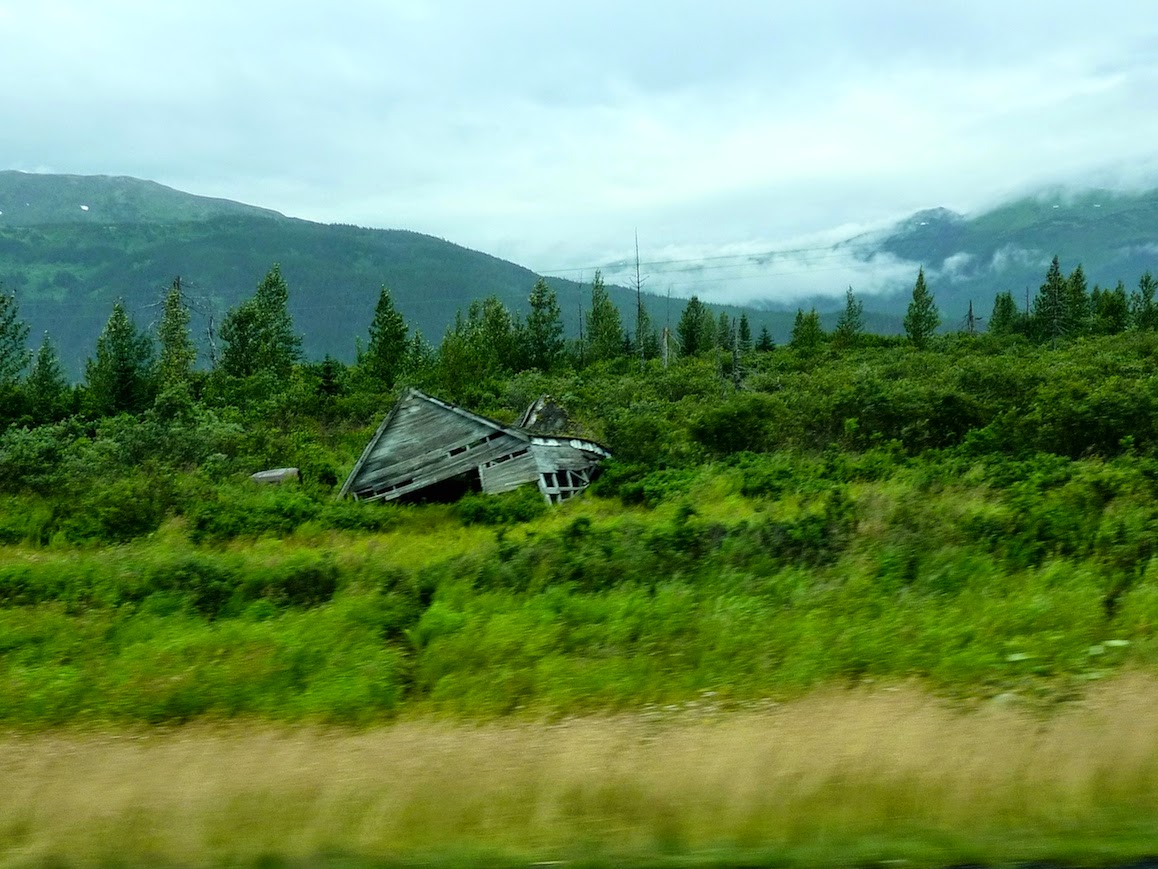Leaving Dawson City we followed the
Klondike River east, turning south to Whitehorse, a distance of some 500 km
(300 Miles). Along the way we pass Lake Laberge (the Lake Lebarge of the poem
The Cremation of Sam McGee) as we re-join the Yukon River heading into
Whitehorse. There was no time to lose; our vehicle was due back that morning.
We had to pay excess mileage on our trip, which had covered 2,865 kms, almost
1,800 miles) so far. Myrtle at the dealership said, “Boy, you drove more in
excess miles than most people drive in their whole trip.”
 |
| Historic Downtown Whitehorse |
Whitehorse has been Yukon's capital since 1953 when it was relocated here from Dawson City and Dawson was downgraded to a town.
 It was a beautiful warm sunny day and we
walked around the capital – it seems every building has a mural – they capture
the mix of indigenous and immigrant life that typifies these northern
communities. We clambered aboard the magnificent SS Klondike, one of the
sternwheeler steamboats that paddled from here to Dawson City and back. It’s
been laid up since 1955 when the highways came and is now a Historic Site. Its
sumptuous lounge has a real 1920’s ‘palm court’ feel…
It was a beautiful warm sunny day and we
walked around the capital – it seems every building has a mural – they capture
the mix of indigenous and immigrant life that typifies these northern
communities. We clambered aboard the magnificent SS Klondike, one of the
sternwheeler steamboats that paddled from here to Dawson City and back. It’s
been laid up since 1955 when the highways came and is now a Historic Site. Its
sumptuous lounge has a real 1920’s ‘palm court’ feel… |
| Longe of SS Klondike |
Yukon history is documented in the Old LogChurch, with its Communion Service made of real Yukon gold, and the MacBrideMuseum where we found the cabin of the real Sam McGee. He had lived in the area
for a while but could never live down the attention he got from Service’s poem
and he left to live ‘down south’. There’s a replica North West Mounted Police
cabin with artefacts of these original Mounties that brought order and safety
to the Gold Rush stampeders.
 In the evening we ate at the Klondike Rib& Salmon restaurant; on a site that began as a tent bakery in 1900. It’s
still housed in the oldest building in Whitehorse and is famous for its
wonderful northern ingredients. I ordered halibut fish and chips; Carol caribou
stew and we switched plates halfway through – wonderful food in an almost party
atmosphere.
In the evening we ate at the Klondike Rib& Salmon restaurant; on a site that began as a tent bakery in 1900. It’s
still housed in the oldest building in Whitehorse and is famous for its
wonderful northern ingredients. I ordered halibut fish and chips; Carol caribou
stew and we switched plates halfway through – wonderful food in an almost party
atmosphere.
We checked into our west-facing room where
the sun roasted us until 11pm and there was no air-conditioning. It was hot! I
stripped off, put a fan on and lay on the bed, but it was no good. “I’m having
a cold shower,” I said and I headed to the bathroom. I hadn’t realized how cold
the water would be though. It took my breath away… that is until I could
scream. I feared a heart attack as I leapt out and grabbed a towel. At least it
had cooled me down but Carol’s rippling laughter still meant I couldn’t sleep.
After breakfast we strolled down to the
Whitepass & Yukon Route to start the next phase of our Alaska Yukon journey
– this time someone else is driving.
Text in italics indicates a link to more info
 |
| SS Klondike Steamboat Paddlewheel |
Text in italics indicates a link to more info















